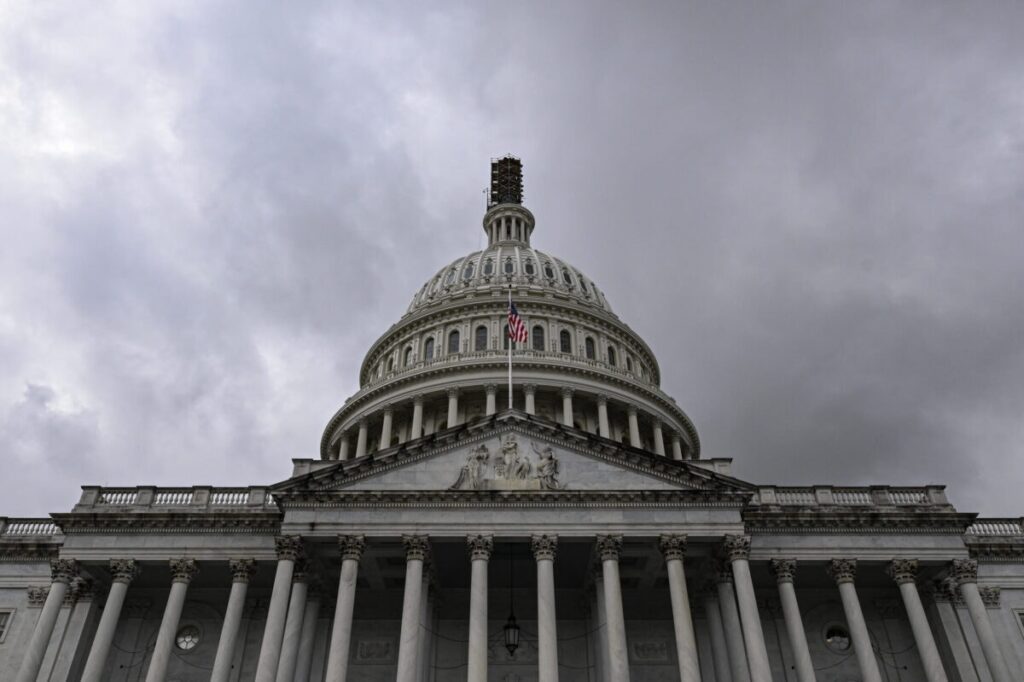The alarm bells are ringing, as Moody’s Investors Service, the last bastion among the “Big Three” credit agencies to hold the U.S. credit rating at the resolute “AAA” status, alerts the world to the looming weakness of the perceived U.S. financial stronghold. At stake? The very essence of United States’ reputation in the square mile of global finances amidst a potential government shutdown, a matter of grave concern to our readers in these unsettling times where economic turbulence is the order of the day.
MOODY'S WARNS U.S. GOVERNMENT SHUTDOWN WOULD NEGATIVELY IMPACT THE COUNTRY'S CREDIT RATING
IS ANOTHER U.S. DEBT DOWNGRADE COMING? 🇺🇸 pic.twitter.com/RAZtx13lYz
— Investing.com (@Investingcom) September 25, 2023
Moody’s intimated the nerve-racking possibility of a “credit negative” situation in a report issued on Monday. Congress is in a frantic rush attempting to secure fiscal sustainability across federal departments, as we stand on the precipice of the new fiscal year slated to commence at the dawn of next month. The fear – a shutdown, however short-lived, would inadvertently expose a perceived weakness in US institutional governance strength, a contrast with other AAA-rated nations that the credit agency has been observing over recent years.
This situation is curiously reminiscent of the period more than a decade ago when the other “Big Three” credit agencies, S&P and Fitch Ratings, started attenuating the illustrious top AAA grade of the United States. This reduction, accompanying a surge in the U.S. government budget and a doubling of the debt since 2011 to an overwhelming $33 trillion, triggered legitimate concerns about an upswing in borrowing costs, interest rate escalations, and economic disruptions.
Moody’s warns gov’t shutdown bad for USA’s credit — one month after Fitch downgrade https://t.co/IUeGQDwTTX pic.twitter.com/XdFpNgXvvl
— New York Post (@nypost) September 25, 2023
In 2011, S&P demoted the U.S. long-term rating from its prestigious “AAA” to “AA+,” referring to political brinkmanship and a loaded debt cannon. This move came on the heels of legislation signed by then-President Barack Obama to elevate the debt ceiling, mere moments before the potential U.S. default on financial obligations reached crisis point. Fitch Ratings mirrored this sentiment only two months ago, downgrading the United States from “AAA” to “AA+” following the federal government’s hair-raising evasion of a debt default during the summer season, right before the financial reckoning now underway in a politically divided Congress.
Fast forward to the present, and Moody’s remains steadfast on its “AAA” rating for the U.S. Yet, the agency warns of a more “pronounced” influence on economic and GDP trajectories if a shutdown endures, negatively affecting national business and consumer assurance or inciting a negative reaction in financial markets. William Foster, an analyst at Moody’s, cautioned that the U.S. may face an escalating negative impact on its credit portfolio if there isn’t a robust fiscal response countering the pressures on federal debt affordability owing to greater interest rates, leading to a negative outlook and a potential downgrade if these pressures remain unaddressed.
In conclusion, the stakes have never been higher. As we stand on the edge of a fiscal precipice, it’s clear that sound fiscal policy making is more necessary than ever to maintain the United States’ reputation as an economic fortress among AAA-rated nations. This peek into the potential chaos a government shutdown may bring should serve as a wake-up call, encouraging us to reinforce fiscal resilience or risk facing the potentially dire consequences as predicted by Moody’s. The ticking clock suggests it’s time for some tough fiscal decisions—decisions that could determine if the United States will continue to be distinguished as a paragon of fiscal strength in the tumultuous world of global finances.



